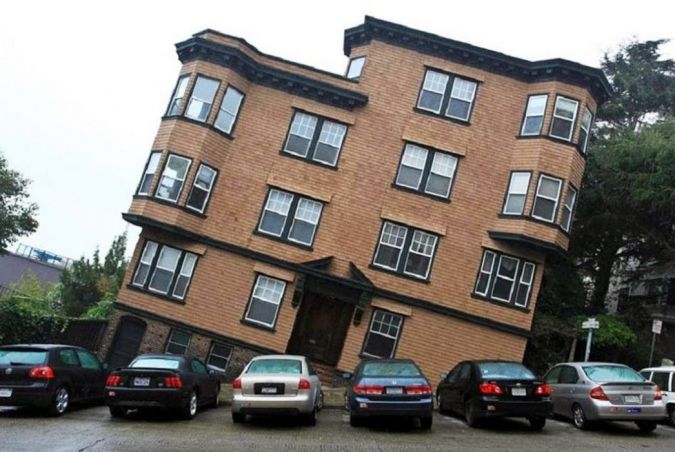A differential settlement occurs when there is a subsidence of one or more footings or piles, which causes the foundation of a dwelling to become unbalanced, tilting the building towards that point and splitting and cracking floor slabs and structural elements; It is often the most dangerous pathology in a house, as it threatens the collapse of the house;
Claiming structural damage due to differential settlement
If your property has a differential seat, the best thing to do is to contact our company so that an expert-architect (who usually also act as a court expert) can correctly assess the property and these structural pathologies;
This expert specialist in constructive damages will study the structural problems of your home to see their origin and extent; To do this, he will make an on-site visit to the building, photograph all the cracks and fissures, study the background (for this he should provide us with the project, geotechnical study and all the documentation he has); On the other hand, given that the differential seat may or may not be stabilised, it would be best to monitor its evolution by means of a core or fissure meter and check it afterwards for any movement; Finally, the expert will make (with measurements) the most appropriate repair proposal to be able to repair the property, quantifying;
A differential settlement is nothing more than an asymmetric movement in the foundation of the house, which causes a pronounced subsidence of a structural element, which pushes the rest of the rigid elements causing the structure to split at the weakest point, which is usually perpendicular to the direction of the thrust; To use a graphic simile, if the foundation were a heavy table with four thin legs, the seat would be that one of its legs would sink and break, this sinking would pull the rest of the structure, which would not support this force and would break forming a crack with an oblique line perpendicular to the direction where the leg has sunk;
Once the origin of the differential seat has been determined, its extent, with a repair proposal, our legal department, made up of lawyers specialised in construction damages, will claim against those responsible for the construction;

How you can claim settlement cracks
There is a 10-year warranty period for claiming these differential seats; The ten-year guarantee period starts to run from the moment the building acceptance certificate is issued (when the property is handed over); And the action to exercise it starts from the moment you are certain of the damage, from then on you have 2 years (according to article 18 of the LOE); Once the expert report is completed, that certainty will be in place and those responsible can be sued;
The responsibility for differential settlement usually lies with the design architect and project manager, as the problem will almost certainly be with the foundation;
However, the developer (if it is not a self-promotion) as developer-seller is always ultimately liable, and claims can also be asserted against him;
The causes of differential settlements may be related to project defects due to poor calculations, lowering of the ground or foundation problems. The consequences are structural damage such as the following cracks.
Diagonal and staggered cracks caused by differential seating
If you have diagonal and/or staggered cracks in your house, be careful, it is probably due to differential settlement of the foundation; This peculiar crack shape usually occurs because the crack pattern is perpendicular to the direction of thrust; Normally from the corner perpendicular to that crack is where all the stress is coming from, and so eventually the element breaks (and cracks occur);
Sometimes, as an excuse, it is mentioned that this is a “normal settlement” of the building; The “normal settlement” movements of the building are usually experienced at most in the first 2 years of the building’s life, when the building comes under load, and may experience slight movements (if no measures have been taken) in the building until its final settlement; They usually manifest themselves as small, hairline cracks that never pose any kind of structural threat; But when, several years after delivery, a dwelling experiences such widespread cracks throughout the dwelling, with the characteristics of coarse cracks (more than 1 mm), oblique or zigzag lines, even through cracks, they can by no means be considered as a normal settlement of the dwelling;
Therefore, diagonal or staggered cracks (marking the brickwork) are often very indicative of differential settlement; Please contact us;
DON’T HESITATE TO CONSULT US!
CUSTOM BUDGETS
